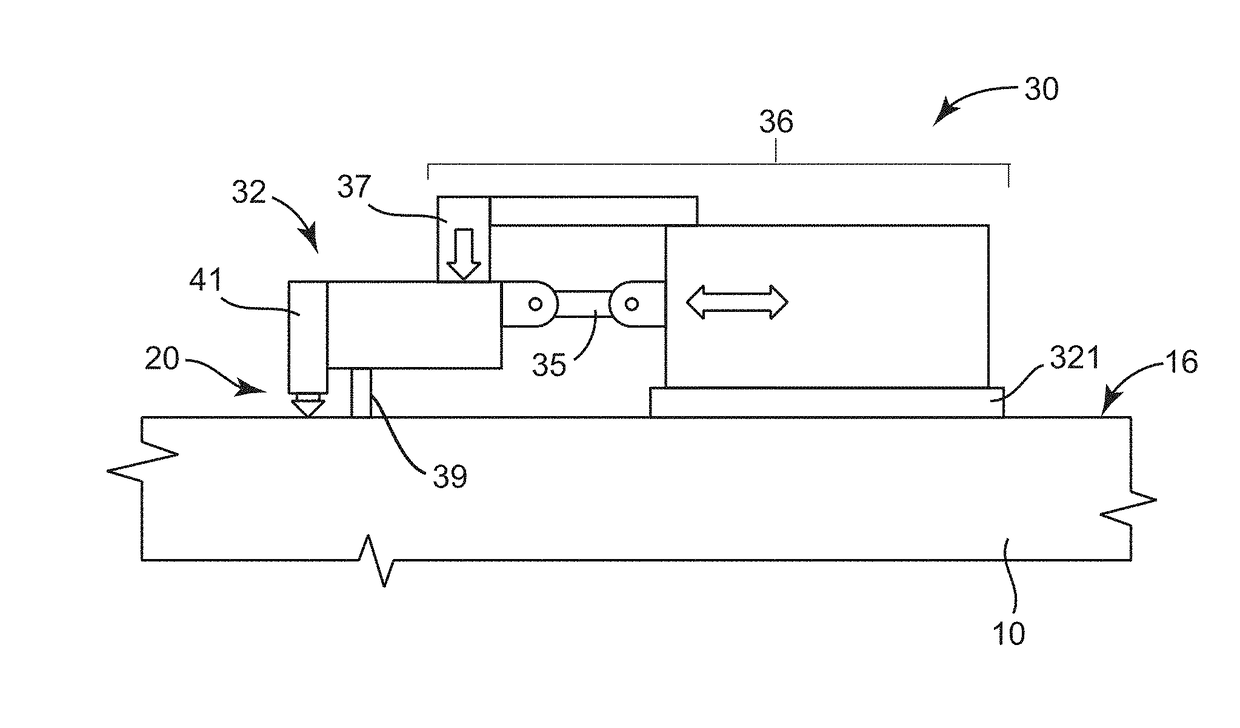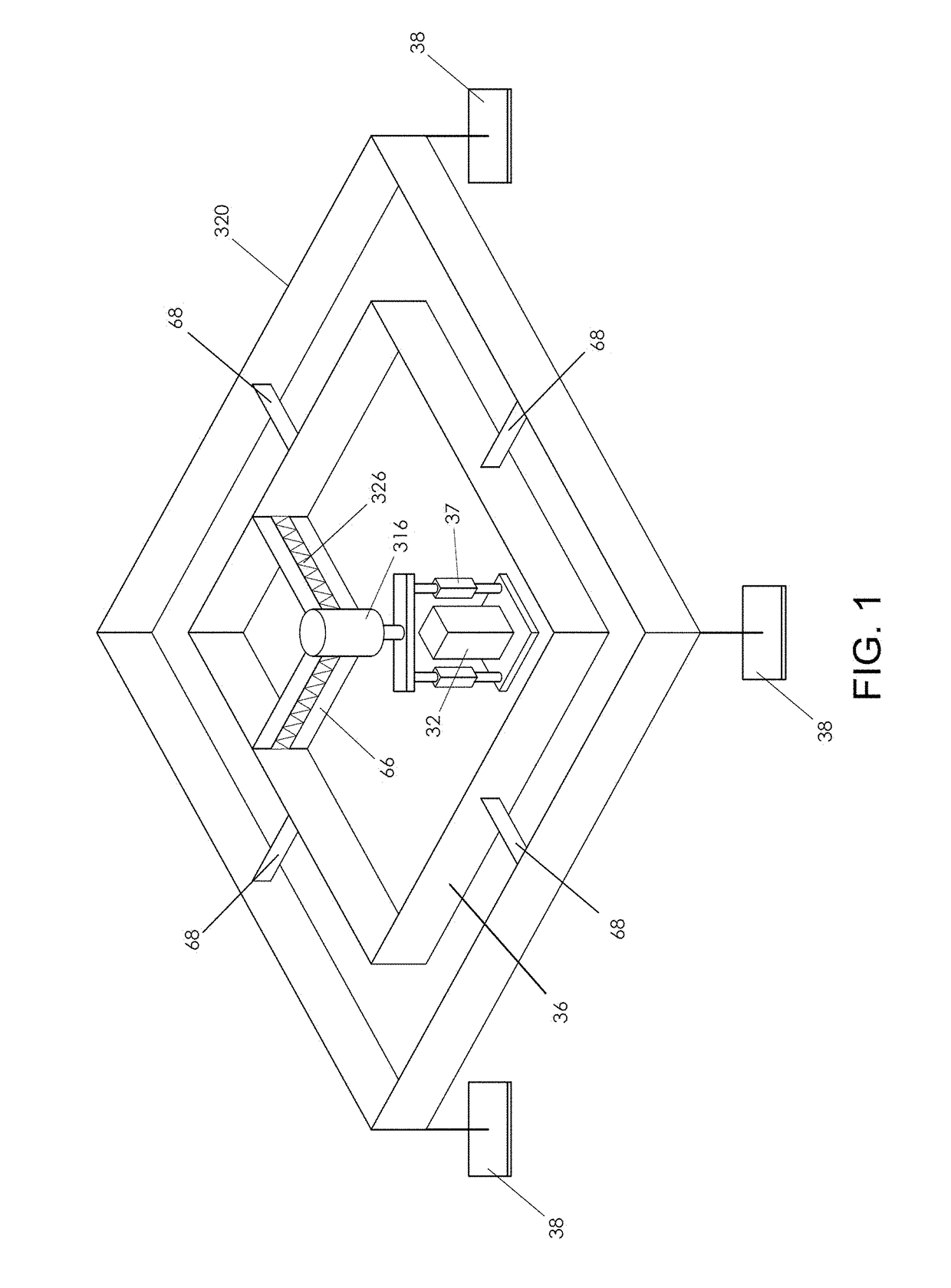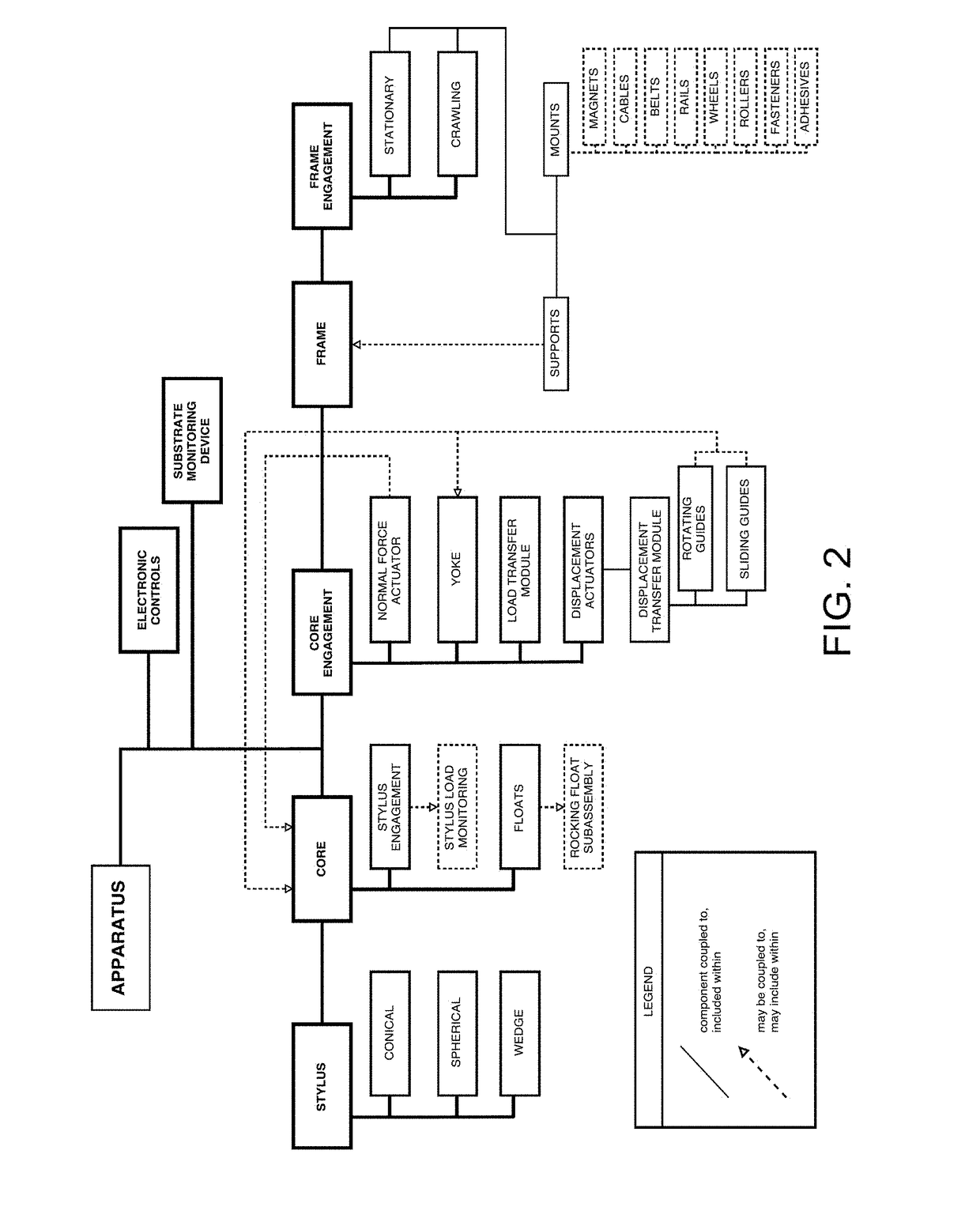Contact mechanic tests using stylus alignment to probe material properties
a contact mechanic and material technology, applied in the field of contact mechanics, can solve the problems of inability to reliably measure mechanical properties, limited scope of current industrial non-destructive techniques for mechanical properties, and equipment providing a hardness value which is not reliabl
- Summary
- Abstract
- Description
- Claims
- Application Information
AI Technical Summary
Benefits of technology
Problems solved by technology
Method used
Image
Examples
Embodiment Construction
[0011]In one embodiment of the invention, an apparatus for performing a contact mechanics test on a substrate, the apparatus comprising (i) a stylus having a principal axis and shaped to deform the substrate at a stylus contact location, (ii) a core, in which the stylus is hosted, configured to engage the stylus against the substrate, (iii) a stylus engagement mechanism, coupled to the core or the stylus, configured to induce a contact load or a penetration depth to the stylus, (iv) a core engagement mechanism, coupled to the core, configured to maintain contact of the core and to move the core along the substrate surface, (v) a frame, in which the core engagement mechanism is hosted, configured to be fixed with respect to the apparatus or to be moved together with the core engagement mechanism as an assembly, (vi) a frame engagement mechanism configured to engage the frame with the substrate surface, and (vii) a substrate monitoring device configured to measure characteristics of s...
PUM
| Property | Measurement | Unit |
|---|---|---|
| included angle | aaaaa | aaaaa |
| included angle | aaaaa | aaaaa |
| included angle | aaaaa | aaaaa |
Abstract
Description
Claims
Application Information
 Login to View More
Login to View More - R&D
- Intellectual Property
- Life Sciences
- Materials
- Tech Scout
- Unparalleled Data Quality
- Higher Quality Content
- 60% Fewer Hallucinations
Browse by: Latest US Patents, China's latest patents, Technical Efficacy Thesaurus, Application Domain, Technology Topic, Popular Technical Reports.
© 2025 PatSnap. All rights reserved.Legal|Privacy policy|Modern Slavery Act Transparency Statement|Sitemap|About US| Contact US: help@patsnap.com



